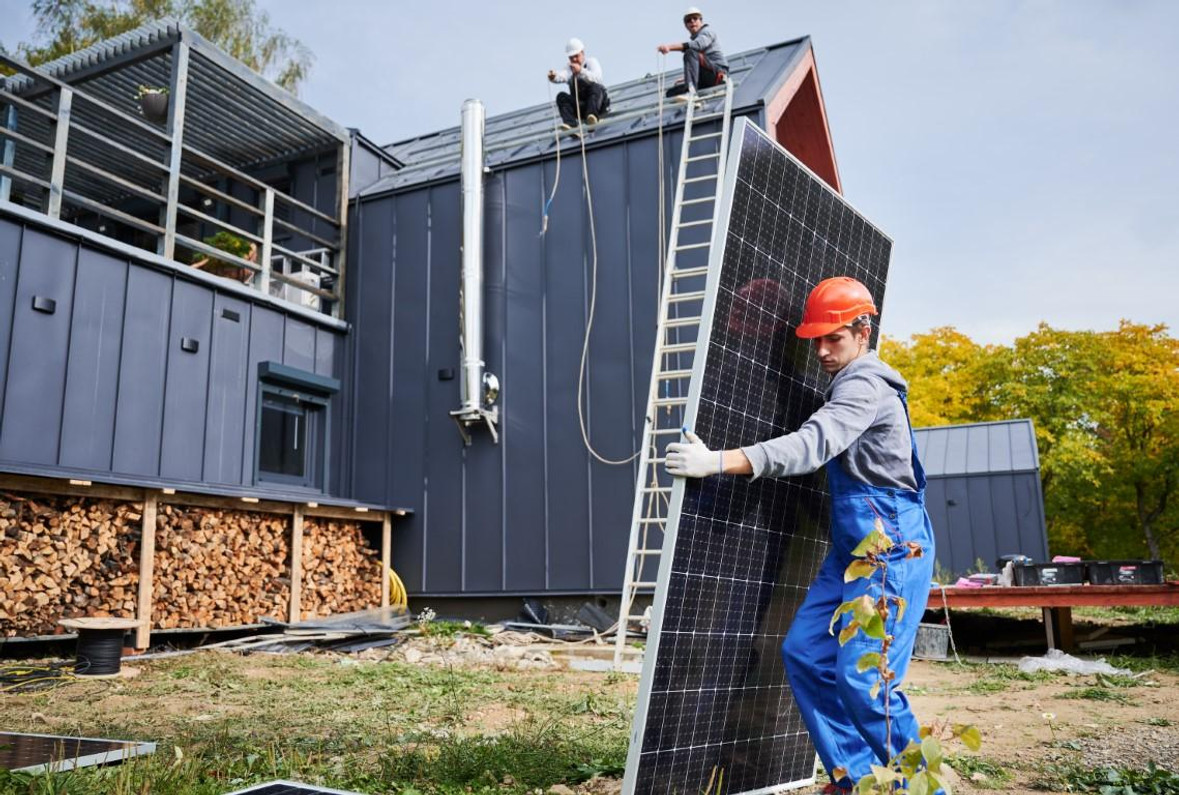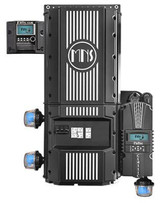"Total newb here" - a post from r/diysolar
Recently I answered a question on reddit about system sizing for a home in Massachusetts. There is a lot of interesting info here, and so I posted it on the blog. Here is the question and my followup:
"Total newb here busy reading this thread and watching tons on YouTube. Interesting in specking an off grid system that can support a house hold averaging 1,070 kWh per month, highest use month, 1,568 kWh, lowest 868 KWh. Average monthly bill $361, yearly bill $4,332. Located in zip code 01944, Boston area. Plenty of roof surface, plenty of sun.
I plan to self install most and have my electrician friend consult step by step and do any tie ins to home.
Like to know how many panels I’ll need based on their kWh rating, what size battery, or what size system. I see lots on systems on line that include everything you need but completely lost on the size I need. For example, the system linked is listed as 3.2kw complete system but my ignorance on this subject renders that info useless.
Appreciate any guidance!
P.S. It would be nice if I can afford a system to handle 100% usage but I realize I may need to go in stages. I spend 7k a year on heating oil also, and would love to transition to heat pumps powered by solar over time. Heat plus electric is costing me 11k per year.
Plan on a 8 year solar loan as funding option if needed. If monthly loan is 150-250 great."
/u/Solamp-io
The first question to ask yourself is “why go off grid”. You currently have utility service at the house, why not go with a grid tied battery backup system? If you can’t or don’t want to export energy to the grid you can get a system that will curtail export, so you self consume all of your generated energy onsite. Both of these system configurations will allow you to get the best of both worlds - solar energy as often as possible, grid service often when you need it and battery backup when the grid is down.
In New England, and other northern areas, we have highly seasonal sunlight- we get a lot more in summer than winter. As you approach the equator this becomes less of an issue, but up here we need to plan for the worst. So in a truly 100% off grid situation you will want an additional power source- generator, micro wind or hydro, and/or need to seriously limit your consumption in the winter time, or build a massively overbuilt system to accommodate the conditions on December 21st. This is another reason why a grid connected system is worth considering - you get to draw on it when you need it in most cases.
I believe that your utility is National Grid. They have a demand response program called “ConnectedSolutions”- so if your project is grid interactive, you can respond to “call” singles from the utility to dispatch energy when the grid needs it most (think late afternoon, very hot days, everyone cranking AC). Between the tax credit and ConnectedSolutions I’m seeing battery systems with payback periods of as low as 5 years. One thing to keep in mind is that you’ll need an approved battery system, like Sol-ark or Panasonic, to participate.
We also have the MA SMART program for solar and storage in MA. I’m not sure of the current status of funding for this program in your area, but something to look into. Also, National Grid has been really backed up and very slow approving interconnections in some parts of MA, so some additional thoughts should be put into the interconnection queue in your area.
You need to make sure you get a system with UL9540 - I’m pretty sure the system you’ve linked does not have it. This is a requirement in most parts of MA. You should also get a system with 9540a, even if not required. There are plenty of other certifications you’ll want or need, but 9540 gets you going in the right direction.
A few other considerations - make sure you get a good flashing for the roof mount. I’m expecting solar panel prices to be going up in 2025, as a tariff is hitting in December. Lot’s of crazy deals on panels to be had right now, so if you're going to buy anything soon, focus on getting some panels and worst case you’ll likely be able to resell them at a profit in the spring. Do not buy batteries ahead of time - they need to be energized soon after you get them and have a shelf life if left unconnected. Inverter and other parts should wait till you have more clarity on system configuration, and requirements for interconnection and permitting. The panels are pretty flexible in terms of configuration, so lower risk.
So the choice you have is 1) grid tie net metering, 2) grid tie self consumption 3) total off grid. For your use case, I think 1 is best, 2 is mid and 3 is worst case. With the exception being if you just wanted a small system for a shed, or RV, experimenting for learning, in those cases off grid is just fine, or in the case where the cost of connecting to the grid is prohibitive. So let’s figure configuration out and go onto the next step.
"Thanks! Great info. #2 seems best. To complicate the equation further, we are a full EV household as of recently. Grid is required to charge our 2 Rivian R1T Large Packs, the cost of charging those was purposely excluded from my stats above. When Rivian unlocks their planed V2G software update, this opens up new options. Both vehicles are garage parked over night 98% of the time, and at least one 100% of the time. They both have 135 kWh battery capacity. I also have a 500 pound propane tank run to my shed set up for a generator previous owner took. Shed is wired back to the house to feed energy from generator. Potential back up power option from generator and battery source from the 2, 135 kwh EV batteries."
/u/Solamp-io
I can only guess on what the Rivian V2G (or V2H) system will look like but it will likely require a specialized inverter/charger. I would plan to connect this system with whatever solar and storage system you have for the home on the AC side, as we’re very in the dark on what, if anything, it would look like on the DC side. This will give you a lot more flexibility too.
Given your specific situation with the shed, including a gas generator into your solar and storage system design is not a bad idea. Theoretical example, but let’s say you get a power outage at night in January. Your batteries kick in and get you through the night. In the morning, the solar kicks in and with the remaining battery gets you to dusk. Since there is so much less sunlight in the winter then in the summer, your panels didn’t get a chance to charge your battery. So, the generator kicks in, powers the house and charges the batteries- it just runs for a few hours, then turns off when the batteries are full, allowing them to take over. Here you are radically reducing the generator run time, giving you much more independence on the same 500g tank. And I see many systems like this be able to run all late spring, summer, early fall without ever needing to use grid power or the generator.
Based on everything you have shared; I’m going to highly recommend that you go with the self-consumption or net metered solar plus storage system. I would recommend going with a system that is compatible with connected solutions, like the Panasonic Evervolt or Sol-ark. With Panasonic you an get a system that has the panels, battery, inverter and ATS from one company, you just need to add the racking and some additional electrical parts. Panasonic also has a really cool “smart box” for load control.
With a Sol-ark based system, you’ll get a lot more flexibility in terms of parts you can connect. In order to get that 9540 certification, you’ll want to use compatible batteries like Renon Xtreme or Pytes V5. The 15k unit has a built in 200amp transfer switch, so you can back up your whole load panel without a separate loads panel, if you wanted to (if you go Sol-ark 15k, take extra caution to make sure the battery has 9540, as many companies have 9540 with only the 12k. need to double check that). You can use virtually any solar panels you want, and you can even use microinverters or a string inverter to AC couple (but you give up the generator input in this setup).
With any of these setups, if you’re putting solar panels on the roof you’ll need a rapid shutdown system compatible with 2020 national electric code. Tigo and APSystems are the primary ones used with a hybrid inverter. I’ve worked with both but these days my go to is the Tigo TS4-O. It has solar module level optimization, monitoring and shutdown, and it does not require powerline communication, so you can keep the RSD system alive in battery backup situations.
Recent Posts
-
Beyond the Grid: Why Portable Solar is the Ultimate Holiday Gift for the Modern Adventurer
The holiday season is upon us, and with it comes the annual challenge: finding a gift that is both m …Nov 17th 2025 -
The Ultimate Guide to the 2025 Solar Tax Credit: What You Must Know Before It's Gone
Introduction: The Intersection of Financial Wisdom and Energy Independence For years, the dream of e …Nov 5th 2025 -
Ultimate Guide to the MidNite Solar Rosie Inverter
Ultimate Guide to the MidNite Solar Rosie inverter with tips on adding in a MidNite Charge Controlle …Jul 21st 2025




